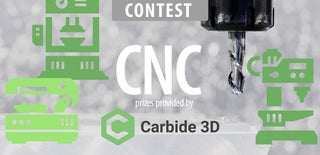Introduction: Etching Precise Custom PCBs With Laser Cutter
Etching your own PCB boards is a relatively easy job, which can save a ton of money and allow for more unique/specific applications. However one of the limiting factors of homemade PCB's is the accuracy of the mask. Common approaches to creating a mask are creating a vinyl sticker with a vinyl cutter or simply drawing with some sort of resist like sharpie. While the vinyl sticker is great for larger things, it is extremely difficult to cut stickers small enough for microelectronics. Laser etching/cutting is perfect for creating really precise masks for even the smallest IC's. I used it for creating custom PCB's for some Texas Instrument DRV8313 brush-less motor drivers and it worked perfectly.
For this laser etching technique you'll need:
1. Copper clad PCB (single or double sided)
2. Laser etcher/cutter (really doesn't need to be that powerful)
3. Spray paint
Step 1: Applying Resist to Board
You're gonna want to start by applying a resist to the copper side of the board. This resist will control where the etching solution will not be able to react with the copper. I've only used matte black enamel spray paint, but I'm sure other types will work just as well. I also recommend only applying one coat of spray paint. One layer is more than enough to resist the acid. Plus, the laser cutter will have an easier time getting through the single layer. It is important to remember that because the laser cutter will be removing the resist. This means that you are etching the inverse of your design.
Step 2: Optimizing the Design File
For this project I used Rhinoceros 5.0 but any other vector based program should work. For etching I found that using a combination of vectors and rasters works best. I used vectors for the really tiny areas between the DRV8313's pins and rasters for any of the larger areas like gaps for smd resistors and capacitors.
Step 3: Laser Etcher/Cutter Settings
For the speed, power and frequency settings of my 40,000 watt Epilog Zing laser, I found that speed and power should be as low as possible, with frequency around 2500hz. For my laser I had speed at 10% and power at a meager 4%. This of course will not cut through the resist on a single run. You have to run it at least four times. When using vectors, the power of the laser is ultimately going to determine the thickness of that line. So smaller stuff should be at a lower power setting and then run more times. you'll know when it got through the resist when you can see the reflective copper. That's why I recommend using a matte color spray paint. You can also increase the speed but this will decrease the accuracy of the etch, but that more so depends on the quality of your laser etcher/cutter. Also make sure your board is as flat as possible and that the laser's focus is as dialed in as possible. This will result in more precise and consistent etches.
Step 4: Tips for Acid Etching and Soldering
Here are some helpful tips for etching such small boards.
1. Use a brush to apply acid rather than submersing the board in acid. This will allow acid to get in the nooks and crannys, while also clear away any dissolved copper buildup.
2. hold your board up to a light to see if any areas haven't been fully etch through yet.
3. Use reflow solder and a heat gun for soldering smd components. They make special heat guns for this but you can just use any old heat gun.
4. Use acetone to quickly clean spray paint off of your board after etching.
5. Clean copper with isopropyl alcohol (a.k.a. rubbing alcohol) to make soldering to it much easier and consistent.

Participated in the
CNC Contest 2016

Participated in the
Epilog Contest 8

Participated in the
First Time Authors Contest 2016









